The Jester Archetype in Jungian Psychology: A Comprehensive Analysis of the Trickster’s Role in the Collective Unconscious
Understanding the Jester Through Jung’s Lens
We used branding archetypes when we designed our practice, Taproot Therapy Collective in Hoover, Alabama. I must admit that as a therapist I am fairly ove identified with the trickster or joker archetype. I use humor a lot in therapy and like to poke at old narratives that need to collapse for new modes of being to be born.
The Jester archetype, known in Jungian psychology as the Trickster, represents one of the most complex and paradoxical figures within Carl Gustav Jung’s framework of the collective unconscious. This archetypal pattern emerges across all cultures and historical periods, manifesting as a fundamental aspect of human psychological development and cultural evolution. Jung’s extensive work on this archetype, particularly in his essay “On the Psychology of the Trickster-Figure” found in Volume 9, Part 1 of his Collected Works, reveals the Trickster as an ancient psychic structure that continues to influence contemporary consciousness.
The significance of understanding the Jester archetype extends beyond academic psychology into practical therapeutic applications, cultural analysis, and personal development. As Jung observed, this figure represents both the most primitive aspects of human consciousness and the catalyst for transformation and renewal. The International Association for Analytical Psychology recognizes the Trickster as one of the central archetypes in understanding human psychological dynamics, particularly in relation to shadow work and individuation processes.
The Collective Unconscious and Archetypal Theory
Jung’s Revolutionary Concept
Carl Jung’s theory of the collective unconscious fundamentally transformed our understanding of the human psyche. Unlike Freud’s personal unconscious, which consists of repressed personal experiences, Jung proposed a deeper layer of the psyche shared by all humanity. This collective unconscious contains what Jung termed archetypes—universal patterns or primordial images that have developed throughout human evolution.
The C.G. Jung Institute of Los Angeles continues to explore these concepts through their extensive library and educational programs. According to Jung’s writings, particularly in his work on archetypes and the collective unconscious, these patterns are not learned but inherited, forming the psychological equivalent of instincts. The Jester or Trickster represents one of these fundamental patterns, appearing in myths, dreams, and cultural narratives across all civilizations.
The Nature of Archetypal Manifestation
Archetypes themselves are not directly observable but manifest through archetypal images and motifs in consciousness. The Trickster archetype particularly demonstrates this principle through its consistent appearance across diverse cultural contexts—from Hermes in Greek mythology to Anansi in West African folklore, from Loki in Norse traditions to Coyote in Native American stories. The Jungian Center for the Spiritual Sciences provides extensive resources on how these archetypal patterns continue to emerge in contemporary psychology and spirituality.
Jung emphasized that archetypes are psychoid in nature, meaning they bridge the gap between the physical and psychological realms. This understanding becomes particularly relevant when examining the Trickster’s role in mediating between opposing forces—order and chaos, conscious and unconscious, sacred and profane.
Historical and Mythological Origins of the Jester
Prehistoric and Ancient Manifestations
The Trickster archetype’s roots extend deep into human prehistory. Archaeological evidence suggests that shamanic figures in prehistoric societies often embodied trickster qualities, using humor, paradox, and boundary-crossing behaviors in their spiritual practices. These early manifestations established the Trickster as a mediator between the human and divine realms.
In ancient civilizations, the Trickster took various forms. Egyptian mythology presented figures like Seth, who embodied chaos and disorder while paradoxically maintaining cosmic balance. Greek culture gave us Hermes, the messenger god who was also patron of thieves and boundaries. The Archive for Research in Archetypal Symbolism (ARAS), accessible through various Jung Institutes, contains extensive visual documentation of these archetypal manifestations throughout history.
Medieval and Renaissance Evolution
During the medieval period, the Jester archetype underwent significant transformation, particularly in European culture. The court fool or jester became an institutionalized expression of this archetype, granted special license to speak truth to power through humor and satire. This evolution demonstrates what Jung identified as the Trickster’s essential function: revealing unconscious truths through seemingly foolish behavior.
The C.G. Jung Institute of San Francisco maintains collections documenting how the Trickster figure evolved through Renaissance art and literature, showing its continued psychological relevance. Shakespeare’s fools—from the Fool in King Lear to Puck in A Midsummer Night’s Dream—exemplify sophisticated literary expressions of this archetype, combining wisdom with apparent madness.
Jung’s Analysis of the Trickster-Figure
Psychological Characteristics
Jung’s analysis of the Trickster reveals a figure of profound psychological complexity. In his seminal essay, Jung describes the Trickster as “a primitive cosmic being of divine-animal nature, on the one hand superior to man because of his superhuman qualities, and on the other hand inferior to him because of his unreason and unconsciousness.” This paradoxical nature makes the Trickster both creator and destroyer, healer and harmful force.
The C.G. Jung Institute of Chicago offers extensive programs exploring these dynamics. Jung identified several key characteristics of the Trickster:
The figure embodies shapeshifting abilities, reflecting the fluid nature of unconscious contents before they become fixed in consciousness. This mutability represents the psyche’s creative potential and its resistance to rigid categorization. The Trickster’s amoral nature—neither purely good nor evil—reflects the unconscious’s indifference to conscious moral categories, operating instead according to its own compensatory logic.
Furthermore, the Trickster demonstrates what Jung called “unconscious identity”—a state of non-differentiation characteristic of early psychological development. This quality links the Trickster to both infantile consciousness and the potential for psychological renewal through regression in service of the ego.
Shadow Integration and Individuation
The Trickster plays a crucial role in Jung’s concept of individuation—the process of psychological development toward wholeness. As a shadow figure, the Trickster confronts the ego with rejected or undeveloped aspects of personality. The C.G. Jung Institute of New York emphasizes this aspect in their clinical training programs, teaching analysts how to recognize and work with Trickster manifestations in therapeutic settings.
Jung observed that encounters with the Trickster often occur during periods of psychological transition or crisis. Dreams featuring trickster figures may indicate that rigid conscious attitudes need disruption for further growth. The Trickster’s appearance signals the need for greater psychological flexibility and the integration of previously unconscious contents.
The Jester in Contemporary Jungian Psychology
Clinical Applications
Modern Jungian analysts recognize the Trickster’s therapeutic significance in various clinical contexts. The Jung Center of Houston regularly hosts workshops on working with archetypal patterns in therapy. When the Trickster constellation becomes activated in a client’s psyche, it often manifests as:
Sudden reversals in therapeutic progress that ultimately lead to breakthrough insights represent the Trickster’s transformative function. Inappropriate humor or laughter during serious moments may indicate Trickster energy breaking through defensive structures. Dreams of being tricked, fooled, or engaging in mischievous behavior often signal the need for greater psychological flexibility.
Therapists trained at institutions like the C.G. Jung Institute of Colorado learn to recognize these patterns and work with them constructively rather than pathologizing them. The Trickster’s emergence in therapy often precedes significant psychological transformation, serving as what Jung called the “transformer” archetype.
Cultural and Social Manifestations
The Trickster archetype continues to manifest powerfully in contemporary culture. From political satirists who use humor to expose societal shadows to internet memes that subvert established narratives, the Trickster’s influence permeates modern life. The archetype appears in various forms:
Stand-up comedians function as modern jesters, granted social license to speak uncomfortable truths through humor. Hackers and digital activists embody the Trickster’s boundary-crossing nature in cyberspace. Social media influencers who challenge conventional wisdom through provocative content channel Trickster energy.
The Jester in Parts-Based Therapeutic Modalities
Internal Family Systems (IFS) Perspective
In Internal Family Systems therapy, developed by Richard Schwartz, the Jester can be understood as a distinct part or subpersonality within the internal system. IFS practitioners recognize that a healthy Jester part brings essential qualities of playfulness, creativity, and the ability to lighten serious situations. However, when burdened by trauma or extreme beliefs, the Jester part may become problematic.
A burdened Jester part might use humor defensively to avoid dealing with painful emotions or to keep others at a distance. This part may have taken on the role of family entertainer to deflect from dysfunction or abuse. In IFS therapy, the goal involves unburdening the Jester part from these extreme roles while maintaining its positive qualities of spontaneity and joy.
The healing process involves helping the Jester part release its burdens and return to its natural, beneficial role within the system. When unburdened, the Jester part can provide valuable perspective, helping the system not take itself too seriously while maintaining appropriate boundaries.
Schema Therapy Integration
Schema therapy, developed by Jeffrey Young, views the Jester through the lens of schema modes and coping styles. The Healthy Adult mode may incorporate adaptive Jester qualities, using appropriate humor and playfulness in relationships. However, maladaptive schemas can distort the Jester’s expression.
The Emotional Deprivation schema might lead to using humor to mask deep loneliness and unmet emotional needs. Social Isolation schemas may result in inappropriate joking that alienates others rather than creating connection. The Defectiveness schema might manifest as self-deprecating humor that reinforces feelings of worthlessness.
In schema therapy, practitioners work to strengthen the Healthy Adult mode’s capacity to express Jester qualities adaptively while addressing the underlying schemas that create dysfunctional patterns.
Voice Dialogue Approach
Voice Dialogue, created by Hal and Sidra Stone, recognizes the Jester as one of many sub-personalities or “voices” within the psyche. This approach involves directly dialoguing with the Jester voice to understand its perspective and role in the personality system.
The Jester voice often emerges as a protector, using humor to defend against vulnerability or criticism. Through Voice Dialogue, individuals can develop an Aware Ego that can consciously choose when to allow the Jester voice expression and when other voices might be more appropriate. This creates greater psychological flexibility and choice in how one responds to life situations.
The Shadow Aspects of the Jester
Destructive Manifestations
While the Jester archetype carries significant positive potential, Jung warned of its shadow manifestations. The dark Trickster can emerge as the malicious prankster who causes harm without regard for consequences. Contemporary examples include internet trolls who use humor to spread hate and discord, or individuals who use sarcasm and mockery to maintain emotional distance and avoid intimacy.
Jung identified several shadow aspects of the Trickster. The figure may manifest as the con artist who exploits others’ trust for personal gain. The cruel joker uses humor to humiliate and demean others, hiding aggression behind the mask of comedy. The perpetual adolescent refuses to accept adult responsibilities, using Trickster energy to avoid growth and commitment.
Integration and Balance
Working with the Trickster’s shadow requires careful psychological work. The goal is not to eliminate the Trickster but to integrate its energy consciously. This involves recognizing when Trickster behavior serves growth versus when it becomes defensive or destructive.
Integration requires developing what Jung called a “transcendent function”—the ability to hold the tension between opposites until a third, transformative position emerges. With the Trickster, this means balancing playfulness with responsibility, humor with seriousness, and chaos with order.
The Jester’s Role in Personal Development and Individuation
Catalyst for Transformation
The Jester archetype serves as a powerful catalyst in the individuation process. By disrupting ego defenses and revealing unconscious contents through humor and paradox, the Trickster facilitates psychological growth. Jung observed that the Trickster often appears at crucial developmental junctures, signaling the need for adaptation and change.
In personal development, engaging with Jester energy can help individuals break free from limiting beliefs and rigid patterns. The Trickster’s irreverence toward authority—including the authority of one’s own ego—creates space for new possibilities and perspectives.
Practical Applications for Self-Development
Individuals can consciously work with Jester energy through various practices. Improvisational theater and comedy workshops provide structured ways to explore Trickster qualities. Studying mythology and folklore featuring Trickster figures offers insights into this archetype’s wisdom. Dream work focusing on Trickster imagery can reveal areas where greater flexibility is needed.
Regular play and creative activities that involve rule-breaking or boundary-crossing (within safe, ethical limits) can help maintain healthy Trickster energy. This might include artistic experimentation, wordplay and punning, or engaging in harmless pranks that bring joy rather than harm.
The Jester in Relationships and Social Dynamics
Interpersonal Manifestations
In relationships, the Jester archetype influences how individuals navigate intimacy, conflict, and connection. A well-integrated Jester brings lightness and play to relationships, helping partners not take themselves too seriously. This energy can defuse tension, create bonding through shared laughter, and maintain perspective during challenging times.
However, excessive or unconscious Jester energy can create relationship difficulties. Using humor to deflect from serious conversations, making light of a partner’s concerns, or being unable to be emotionally present due to constant joking can damage intimacy. Understanding how the Jester operates in one’s relational patterns is crucial for healthy connections.
Group and Collective Dynamics
The Trickster plays essential roles in group dynamics and social movements. In organizations, individuals who embody healthy Trickster energy often serve as innovative catalysts, challenging groupthink and introducing creative solutions. They may be the ones who question established procedures, propose unconventional approaches, or use humor to address elephants in the room.
Social movements throughout history have utilized Trickster strategies to challenge power structures. From the Yes Men’s corporate pranks to Banksy’s subversive street art, contemporary activists channel Trickster energy to expose societal shadows and inspire change.
Somatic and Neurobiological Dimensions
Embodied Experience of the Jester
The Jester archetype profoundly influences somatic experience and bodily expression. Those strongly identified with this archetype often display characteristic physical patterns including animated facial expressions and gestures, a light, bouncing quality to movement, and rapid shifts in posture and energy. The body becomes a vehicle for the Trickster’s shapeshifting nature.
When the Jester is activated, individuals may experience physical sensations of lightness, tingling, or effervescence. Laughter—the Jester’s primary somatic expression—creates measurable physiological changes including endorphin release, immune system activation, and stress hormone reduction. Understanding these somatic dimensions helps integrate the Jester at a body level, not just cognitively.
Neurobiological Correlates
Contemporary neuroscience offers insights into the Trickster’s neurobiological substrates. Humor processing involves complex neural networks including the prefrontal cortex for detecting incongruity, the limbic system for emotional response, and the motor cortex for laughter expression. The Trickster’s boundary-crossing nature may relate to increased neural connectivity between typically separate brain regions.
Research suggests that individuals with strong Trickster qualities may show enhanced divergent thinking abilities, increased activation in brain regions associated with cognitive flexibility, and unique patterns in default mode network activity. These findings support Jung’s intuition about the Trickster’s role in creative transformation.
Cultural Variations and Universal Themes
Cross-Cultural Manifestations
While the Trickster appears universally, its specific manifestations vary significantly across cultures. Native American traditions feature Coyote, Raven, and Rabbit as Trickster figures, each embodying cultural values about survival, adaptation, and wisdom. West African cultures celebrate Anansi the spider, whose stories traveled through the diaspora to influence Caribbean and American folklore.
Asian traditions present their own Trickster figures: the Monkey King in Chinese mythology, Tengu in Japanese folklore, and various fox spirits across East Asian cultures. Each cultural expression reflects specific values while maintaining universal Trickster themes of transformation, boundary-crossing, and paradox.
Modern Global Expressions
In our interconnected world, the Trickster increasingly appears in global rather than purely local forms. Internet memes function as contemporary Trickster tales, spreading rapidly across cultural boundaries. Global entertainment figures who embody Trickster qualities—from comedians to social media personalities—influence collective consciousness worldwide.
This globalization of the Trickster raises questions about cultural appropriation versus archetypal universality. Jung’s concept of the collective unconscious suggests that while surface expressions vary, the underlying archetypal pattern remains consistent across humanity.
The Jester in Art, Literature, and Media
Literary Evolution
The Trickster’s literary evolution demonstrates the archetype’s enduring relevance. From ancient epics to contemporary fiction, Trickster figures challenge protagonists and readers alike. Modern literature continues to explore Trickster themes through unreliable narrators who trick readers, metafictional techniques that break narrative conventions, and characters who embody Trickster qualities in complex ways.
Authors like Tom Robbins, Kurt Vonnegut, and Neil Gaiman explicitly engage with Trickster mythology in their work. Their stories demonstrate how the Trickster adapts to contemporary concerns while maintaining its essential archetypal function.
Visual and Performing Arts
Visual artists have long utilized Trickster energy to challenge artistic conventions and social norms. From Dada’s anti-art provocations to contemporary street art’s guerrilla tactics, the Trickster manifests in artistic movements that disrupt established aesthetic hierarchies.
Performance art particularly embodies Trickster qualities through its emphasis on transformation, boundary-crossing, and audience provocation. Artists who adopt Trickster personas—from Andy Kaufman to Marina Abramović—use their bodies and presence to create transformative experiences that blur the lines between art and life.
Therapeutic Techniques for Working with the Jester
Recognizing Jester Patterns in Therapy
Therapists trained in Jungian and post-Jungian approaches learn to recognize when Jester energy emerges in the therapeutic container. Signs include sudden shifts in mood from serious to playful, dreams featuring trickster figures or themes of being tricked, and resistance that manifests as humor or deflection. Clients may unconsciously adopt a Jester stance to avoid painful material.
Therapeutic work involves differentiating between healthy Jester expression and defensive uses of humor. This requires careful attention to timing, context, and the client’s overall psychological development. The therapist must be able to join with the Jester energy when appropriate while also helping the client access other parts of their psyche.
Integration Strategies
Specific techniques for integrating Jester energy include active imagination work with Trickster figures, expressive arts therapy incorporating play and improvisation, and sandplay therapy where Trickster figures often spontaneously appear. Body-based approaches may involve laughter yoga or movement practices that emphasize spontaneity and rule-breaking.
Dream work remains particularly valuable, as Trickster dreams often provide direct guidance about needed psychological adjustments. Clients can be encouraged to dialogue with Trickster dream figures, asking what message or gift they bring to consciousness.
The Jester in Politics and Social Commentary
Political Satire as Modern Jesting
Political satirists function as contemporary court jesters, using humor to expose political shadows and speak truth to power. Programs like “The Daily Show” and “Last Week Tonight” demonstrate how Trickster energy can influence political discourse and public opinion. These modern jesters enjoy a similar protected status to medieval fools, able to critique authority through comedy.
The effectiveness of political satire in creating actual change remains debated, but its psychological function is clear: it provides a socially sanctioned outlet for collective shadow material and helps process political anxiety through laughter.
Digital Age Tricksters
The internet has created new venues for Trickster expression. Hacktivists like Anonymous embody the Trickster’s chaotic-good alignment, using technological prowess to expose corruption and challenge authority. Meme creators function as distributed Tricksters, using humor and image manipulation to influence collective consciousness.
Social media has democratized the Jester function, allowing anyone to potentially reach millions with Trickster content. This presents both opportunities and dangers, as the line between constructive Trickster energy and destructive trolling becomes increasingly blurred.
The Jester in Spirituality and Religion
Sacred Fools and Holy Madness
Many spiritual traditions recognize the value of “holy fools” who use unconventional means to convey spiritual truths. From Zen masters’ use of paradox and humor to Sufi stories featuring the wise fool Nasrudin, the Trickster serves spiritual development by disrupting rigid religious thinking.
Jung understood the Trickster as serving a crucial function in religious experience—preventing the calcification of spiritual truth into dead dogma. The Trickster’s irreverence toward the sacred paradoxically maintains the sacred’s vitality by preventing it from becoming merely conventional.
Contemporary Spiritual Movements
Modern spiritual movements often incorporate Trickster elements, particularly those emphasizing direct experience over doctrine. The human potential movement, various forms of neo-shamanism, and certain New Age practices utilize Trickster energy to break through consensus reality and access expanded states of consciousness.
However, the spiritual Trickster’s shadow can manifest as the charlatan guru who exploits seekers’ vulnerability, or as spiritual bypassing that uses humor and “crazy wisdom” to avoid genuine psychological work.
Future Directions and Emerging Research
Neuroscience and Archetypal Studies
Emerging research in neuroscience and consciousness studies offers new perspectives on archetypal phenomena. Brain imaging studies of humor, creativity, and play provide biological correlates for what Jung intuited psychologically. The discovery of the default mode network and its role in self-referential processing may relate to how archetypal patterns like the Trickster influence consciousness.
Future research may further elucidate how archetypal patterns are encoded in neural structures and how therapeutic work with archetypes creates measurable brain changes. This integration of depth psychology with neuroscience—what some call “neuropsychoanalysis”—promises to deepen our understanding of the Trickster’s psychological functions.
Cultural Evolution and the Digital Trickster
As humanity faces unprecedented challenges—climate change, artificial intelligence, global inequality—the Trickster’s role in cultural evolution becomes increasingly significant. The archetype’s capacity to generate novel solutions through creative disruption may be essential for navigating these complex challenges.
The emergence of artificial intelligence raises fascinating questions about whether AI can embody Trickster qualities. Can machines truly engage in the boundary-crossing creativity that characterizes the Trickster, or is this fundamentally a biological/psychological phenomenon? These questions will likely shape future research in both AI development and archetypal psychology.
Practical Exercises for Engaging the Jester
Personal Reflection Questions
To explore your relationship with the Jester archetype, consider these reflective prompts: How does humor function in your life—as connection, defense, or both? When do you feel most playful and spontaneous? What beliefs or rules would benefit from some Trickster disruption? How do you respond when others play the Trickster role around you?
Journaling about Trickster encounters in dreams, relationships, and daily life can reveal patterns in how this archetype operates in your psyche. Pay particular attention to moments of unexpected laughter, rule-breaking impulses, or situations where you feel trapped between opposing forces.
Creative Practices
Engaging the Jester through creative practice helps integrate this energy consciously. Try improvisational exercises without predetermined outcomes. Write stories featuring Trickster characters or where you become the Trickster. Create art that deliberately breaks your usual aesthetic rules. Practice telling jokes or funny stories, noting what makes you laugh.
Physical practices might include dance improvisation, particularly styles that emphasize spontaneity over form. Clowning workshops offer structured ways to explore the Jester somatically. Even simple activities like playing with children or pets can activate healthy Trickster energy.
Conclusion: The Eternal Dance of Order and Chaos
The Jester archetype, as understood through Jungian psychology, represents far more than mere comic relief or entertainment. This fundamental pattern of the collective unconscious serves essential psychological, cultural, and spiritual functions. By disrupting rigid patterns, revealing shadows through humor, and maintaining the vital tension between order and chaos, the Trickster enables both individual and collective evolution.
Jung’s insight that the Trickster represents both the most primitive and the most transformative aspects of the psyche remains profoundly relevant. In our contemporary world, faced with unprecedented complexity and rapid change, the Trickster’s gifts of adaptability, creative problem-solving, and the ability to find humor in adversity become increasingly valuable.
The challenge lies not in eliminating or controlling the Trickster but in developing conscious relationship with this archetypal energy. Through understanding its manifestations in our personal psychology, relationships, and culture, we can work with rather than against the Trickster’s transformative power. This conscious engagement—what Jung called the transcendent function—allows us to benefit from the Trickster’s gifts while mitigating its potential for destruction.
As we continue to explore the depths of the human psyche through both ancient wisdom and modern science, the Jester/Trickster remains a faithful companion on the journey toward wholeness. Neither wholly good nor evil, neither completely wise nor foolish, the Trickster mirrors the paradoxical nature of consciousness itself. In embracing this paradox, we open ourselves to the creative transformation that lies at the heart of psychological development and cultural evolution.
The Jester’s laughter echoes through the corridors of the collective unconscious, reminding us not to take ourselves too seriously while simultaneously calling us to the serious work of becoming whole. In this eternal dance between order and chaos, wisdom and folly, sacred and profane, the Trickster serves as both destroyer and creator, forever opening new possibilities for human consciousness to explore and integrate.
References and Further Reading
For those interested in deepening their understanding of the Jester archetype and Jungian psychology, the following resources provide valuable insights:
Primary Sources:
- Jung, C.G. (1969). “On the Psychology of the Trickster-Figure” in The Archetypes and the Collective Unconscious, Collected Works Volume 9, Part 1. Princeton University Press. Available through JSTOR
- Jung, C.G. Four Archetypes: Mother, Rebirth, Spirit, Trickster. Princeton University Press. Available on JSTOR
Jungian Institutes and Educational Resources:
- International Association for Analytical Psychology (IAAP) – The official international organization for Jungian analysts
- C.G. Jung Institute of Los Angeles – Offers training programs and public events
- C.G. Jung Institute of San Francisco – Features the Joseph Henderson Archive
- C.G. Jung Institute of Chicago – Home to Jung Chicago Radio podcast
- C.G. Jung Institute of New York – Provides analytical training and referral services
- Jung Center of Houston – Offers programs bridging psychology and the arts
- Jungian Center for the Spiritual Sciences – Provides extensive online resources and essays
- C.G. Jung Institute of Colorado – Focuses on continuing Jung’s research
Contemporary Scholarship:
- Hyde, Lewis. Trickster Makes This World: Mischief, Myth, and Art. A comprehensive exploration of the Trickster in culture and creativity
- Radin, Paul. The Trickster: A Study in American Indian Mythology. The seminal anthropological work that influenced Jung’s thinking
- The Archive for Research in Archetypal Symbolism (ARAS) – accessible through IAAP member institutes
Digital Archives:
- The Collected Works of C.G. Jung on Internet Archive – Public domain access to Jung’s writings
- Volume 9 of the Collected Works – Specifically focused on archetypes
Explore all the Archetypes
Bibliography
- Campbell, J. (1959). The masks of God: Primitive mythology. Viking Press.
- Schwartz, R. C. (1995). Internal family systems therapy. Guilford Press.
- Earley, J. (2009). Self-therapy: A step-by-step guide to creating wholeness and healing your inner child using IFS. Pattern System Books.
- Young, J. E., Klosko, J. S., & Weishaar, M. E. (2006). Schema therapy: A practitioner’s guide. Guilford Press.
- Stone, H., & Stone, S. (2011). Embracing ourselves: The voice dialogue manual. New World Library.
- Campbell, J. (1949). The hero with a thousand faces. New World Library.
- Zipes, J. (2012). The irresistible fairy tale: The cultural and social history of a genre. Princeton University Press.
- Hyde, L. (2010). Trickster makes this world: Mischief, myth, and art. Farrar, Straus and Giroux.
- Willeford, W. (1969). The fool and his scepter: A study in clowns and jesters and their audience. Northwestern University Press.
- Otto, B. K. (2001). Fools are everywhere: The court jester around the world. University of Chicago Press.
- Jung, C. G. (1981). The archetypes and the collective unconscious. Princeton University Press.
- May, R. (1991). The cry for myth. W. W. Norton & Company.
- Zweig, C., & Abrams, J. (1991). Meeting the shadow: The hidden power of the dark side of human nature. Tarcher.
- Kupperberg, P. (2006). Tricksters. Chelsea House Publishers.
- Pearson, C. S. (1991). Awakening the heroes within: Twelve archetypes to help us find ourselves and transform our world. HarperCollins.
- Siegel, D. J. (2010). Mindsight: The new science of personal transformation. Bantam Books.
- Herman, J. L. (2015). Trauma and recovery: The aftermath of violence–from domestic abuse to political terror. Basic Books.
- Annas, J. (1981). An introduction to Plato’s Republic. Clarendon Press.
- Crossan, J. D. (1988). The dark interval: Towards a theology of story. Polebridge Press.
- Geary, J. (2005). The world in a phrase: A brief history of the aphorism. Bloomsbury.
- Caron, J. E. (2016). The quantum divide: Why Schrödinger’s cat is either dead or alive. Oxford University Press.
- Harari, Y. N. (2015). Sapiens: A brief history of humankind. HarperCollins.
- Jung, C. G. (1966). Two essays on analytical psychology. Princeton University Press.


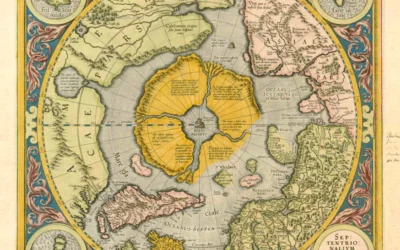




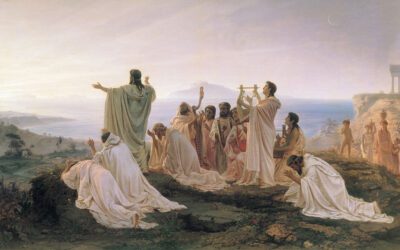
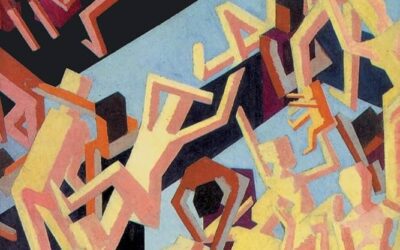
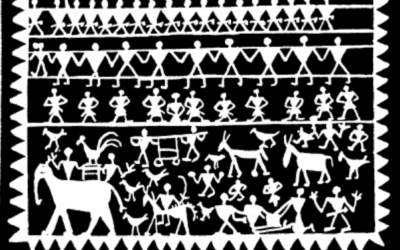










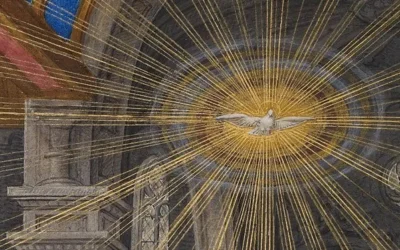






0 Comments